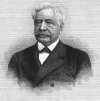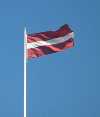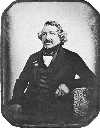Definition: (noun) A punctuation mark (/) used to separate related items of information.
Synonyms: separatrix, solidus, slash, diagonal, stroke.
Usage: Because the poem was reproduced in block text, virgules were used to indicate where the lines had originally been separated.
Discuss
Source: The Free Dictionary
.jpg) When unsettled controversies with England in the aftermath of the American Revolution threatened to involve the US in another war, President George Washington named Chief Justice John Jay as an envoy for the negotiation of a treaty. The agreement, concluded in 1794 and known as Jay’s Treaty, averted war between the two nations, solved many outstanding issues, and opened 10 years of largely peaceful trade in the midst of the French Revolutionary Wars. How was the treaty received in the US?
When unsettled controversies with England in the aftermath of the American Revolution threatened to involve the US in another war, President George Washington named Chief Justice John Jay as an envoy for the negotiation of a treaty. The agreement, concluded in 1794 and known as Jay’s Treaty, averted war between the two nations, solved many outstanding issues, and opened 10 years of largely peaceful trade in the midst of the French Revolutionary Wars. How was the treaty received in the US?  The
The  A French diplomat and engineer, Lesseps conceived the idea of the Suez Canal while serving in Egypt. He supervised the construction and achieved world renown for the project. In 1878, he became president of the company formed to construct the Panama Canal, but lack of funds forced the project into bankruptcy amid charges of corruption. He was brought to trial for misappropriation of funds and sentenced to prison but was later cleared. What monument did Lesseps present to the US in 1884?
A French diplomat and engineer, Lesseps conceived the idea of the Suez Canal while serving in Egypt. He supervised the construction and achieved world renown for the project. In 1878, he became president of the company formed to construct the Panama Canal, but lack of funds forced the project into bankruptcy amid charges of corruption. He was brought to trial for misappropriation of funds and sentenced to prison but was later cleared. What monument did Lesseps present to the US in 1884?  Evidence of human cannibalism suggests that the practice began thousands of years ago. Cannibalism, eating the flesh of the members of one’s own species, is practiced ritually in some cultures, though in Western society people tend to turn to cannibalism only in situations of extreme starvation or when they are mentally ill. Historically, the Aztec Empire is the most famous example of a cannibalistic society. What country was once known as the “Cannibal Isles”?
Evidence of human cannibalism suggests that the practice began thousands of years ago. Cannibalism, eating the flesh of the members of one’s own species, is practiced ritually in some cultures, though in Western society people tend to turn to cannibalism only in situations of extreme starvation or when they are mentally ill. Historically, the Aztec Empire is the most famous example of a cannibalistic society. What country was once known as the “Cannibal Isles”?  In 1928, Walt Disney created cartoon icon Mickey Mouse, who made his debut in the silent film Plane Crazy. That same year, Mickey also appeared in Steamboat Willie, written and directed by Disney and animator Ub Iwerks. An immediate hit, the film was Disney’s first attempt at using sound and the first fully synchronized sound cartoon. Music is prominently featured, and Mickey first appears in the film whistling the song Steamboat Bill. Who provided the voice for Mickey?
In 1928, Walt Disney created cartoon icon Mickey Mouse, who made his debut in the silent film Plane Crazy. That same year, Mickey also appeared in Steamboat Willie, written and directed by Disney and animator Ub Iwerks. An immediate hit, the film was Disney’s first attempt at using sound and the first fully synchronized sound cartoon. Music is prominently featured, and Mickey first appears in the film whistling the song Steamboat Bill. Who provided the voice for Mickey?  Independence Day marks
Independence Day marks  Originally a scene painter for the opera, Daguerre was a French inventor who devised one of the first practical photographic processes—the daguerreotype. He, in collaboration with Nicéphore Niépce, found that a permanent image could be formed on a silver iodide-coated copper plate if it was exposed to light, then fumed with mercury vapor and fixed by a solution of common salt. His daguerreotype process was announced in 1839 at the Academy of Sciences. Who acquired the patent for the invention?
Originally a scene painter for the opera, Daguerre was a French inventor who devised one of the first practical photographic processes—the daguerreotype. He, in collaboration with Nicéphore Niépce, found that a permanent image could be formed on a silver iodide-coated copper plate if it was exposed to light, then fumed with mercury vapor and fixed by a solution of common salt. His daguerreotype process was announced in 1839 at the Academy of Sciences. Who acquired the patent for the invention?  Camels, ruminant mammals of the family Camelidae, are well adapted to desert life, as they can live for several days without drinking and their broad, flat, two-toed feet do not sink in the sand. There are two species of true camel, the single-humped Arabian camel, a domesticated animal used in Arabia and N Africa, and the two-humped Bactrian camel of central Asia. The humps, fat stores that provide energy and water when metabolized, also aid in desert survival. How fast can a camel run?
Camels, ruminant mammals of the family Camelidae, are well adapted to desert life, as they can live for several days without drinking and their broad, flat, two-toed feet do not sink in the sand. There are two species of true camel, the single-humped Arabian camel, a domesticated animal used in Arabia and N Africa, and the two-humped Bactrian camel of central Asia. The humps, fat stores that provide energy and water when metabolized, also aid in desert survival. How fast can a camel run?